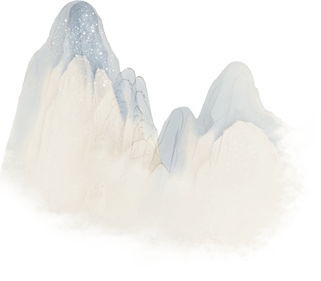Government Records Service Homepage animation







Introduction
2025 marks the 80th anniversary of the victory of the Chinese People's War of Resistance Against Japanese Aggression and the World Anti-Fascist War. This War was the longest in time, largest in scale, and most sacrifices made for the Chinese nation in its united resistance against foreign enemies. The whole Chinese population made immense sacrifices, contributing significantly to the victory of the World Anti-Fascist War. It marked a historic turning point where the Chinese nation united and was determined on their path towards national rejuvenation. During the Japanese Occupation of Hong Kong (1941–1945), Hong Kong residents endured severe hardships, facing acute shortages of food and daily necessities. Buildings were either destroyed or confiscated. Both the lives of the people and the city's appearance suffered dramatic changes. Through archives, newspaper, and other collections, the Government Records Service guides visitors to revisit the painful history left by the Japanese Occupation and to explore the heroic resistance of the Hong Kong Independent Battalion of the Dongjiang Column against the enemy.
2025 marks the 80th anniversary of the victory of the Chinese People's War of Resistance Against Japanese Aggression and the World Anti-Fascist War. This War was the longest in time, largest in scale, and most sacrifices made for the Chinese nation in its united resistance against foreign enemies. The whole Chinese population made immense sacrifices, contributing significantly to the victory of the World Anti-Fascist War. It marked a historic turning point where the Chinese nation united and was determined on their path towards national rejuvenation. During the Japanese Occupation of Hong Kong (1941–1945), Hong Kong residents endured severe hardships, facing acute shortages of food and daily necessities. Buildings were either destroyed or confiscated. Both the lives of the people and the city's appearance suffered dramatic changes. Through archives, newspaper, and other collections, the Government Records Service guides visitors to revisit the painful history left by the Japanese Occupation and to explore the heroic resistance of the Hong Kong Independent Battalion of the Dongjiang Column against the enemy.
The Siege
On 8 December 1941, the Japanese army began its invasion of Hong Kong, launching a fierce assault that culminated in the landing of Hong Kong Island on the evening of 18 December. On 25 December, the Governor of Hong Kong, Sir Mark Young, surrendered to the Japanese army, marking the beginning of a three-year and eight-month dark period under Japanese Occupation. Amid severe food shortages, the Japanese Military Government implemented “population repatriation” and stringent rice rationing. Besides, residents were also coerced into exchanging Hong Kong dollars for military notes, representing a seizure of private property in a disguise. Life during this dark period was marked by immense hardship and suffering, leaving a lasting and painful imprint on Hong Kong’s history.
On 8 December 1941, the Japanese army began its invasion of Hong Kong, launching a fierce assault that culminated in the landing of Hong Kong Island on the evening of 18 December. On 25 December, the Governor of Hong Kong, Sir Mark Young, surrendered to the Japanese army, marking the beginning of a three-year and eight-month dark period under Japanese Occupation. Amid severe food shortages, the Japanese Military Government implemented “population repatriation” and stringent rice rationing. Besides, residents were also coerced into exchanging Hong Kong dollars for military notes, representing a seizure of private property in a disguise. Life during this dark period was marked by immense hardship and suffering, leaving a lasting and painful imprint on Hong Kong’s history.
Occupation
Following the Japanese occupation of Hong Kong, the Japanese Military Government conducted property registration. These property registration archives recorded detailed information such as the addresses, sizes, ownerships and valuations of properties, and documented the renaming of Hong Kong streets and districts with Japanese-style names by the Japanese Military Government. Additionally, buildings and land were also confiscated by the Japanese Military Government. For example, the Japanese Military Government forcibly acquired land near Kai Tak Airport and displaced residents, levelled part of Sacred Hill and damaged the large boulder inscribed with the words "Sung Wong Toi" to extend the Kai Tak Airport, resulting in irreversible changes to Hong Kong’s historical landscape and cultural memory.
Following the Japanese occupation of Hong Kong, the Japanese Military Government conducted property registration. These property registration archives recorded detailed information such as the addresses, sizes, ownerships and valuations of properties, and documented the renaming of Hong Kong streets and districts with Japanese-style names by the Japanese Military Government. Additionally, buildings and land were also confiscated by the Japanese Military Government. For example, the Japanese Military Government forcibly acquired land near Kai Tak Airport and displaced residents, levelled part of Sacred Hill and damaged the large boulder inscribed with the words "Sung Wong Toi" to extend the Kai Tak Airport, resulting in irreversible changes to Hong Kong’s historical landscape and cultural memory.
Imprints of Occupation
During the Japanese Occupation, the Japanese Military Government established internment camps to detain prisoners of war and foreign civilians. The Japanese Military Government’s propaganda claimed internees received good treatment. In reality, conditions in these camps were harsh, with internees suffering from malnutrition and plagued by diseases. Many buildings were damaged during the war, leaving traces of the invasion. On the other hand, the Japanese Military Government plundered vast amounts of Hong Kong residents’ wealth to construct the Japanese War Memorial, a symbol of their invasion which further deepened the suffering and humiliation of the local population.
During the Japanese Occupation, the Japanese Military Government established internment camps to detain prisoners of war and foreign civilians. The Japanese Military Government’s propaganda claimed internees received good treatment. In reality, conditions in these camps were harsh, with internees suffering from malnutrition and plagued by diseases. Many buildings were damaged during the war, leaving traces of the invasion. On the other hand, the Japanese Military Government plundered vast amounts of Hong Kong residents’ wealth to construct the Japanese War Memorial, a symbol of their invasion which further deepened the suffering and humiliation of the local population.
Defying the Enemy
In 1942, the Hong Kong Independent Battalion was established in Sai Kung under
the Guangdong
People’s Anti-Japanese Guerrillas Force (reorganised to the Dongjiang Column of the Guangdong
People's Anti-Japanese Guerrilla Force in 1943). Fighting units were subsequently established in
Sai
Kung, Sha Tau Kok, Yuen Long, Lantau Island, and urban areas.
During the early stages
of
the Japanese Occupation, the Hong Kong Independent Battalion of the Dongjiang Column broke through
enemy defences, successfully rescuing groups of prominent figures in various sectors, and enabling
them to continue contributing to the war of resistance against Japanese aggression. Over the
three-year and eight-month dark period, the Hong Kong Independent Battalion of the Dongjiang
Column
braved life-and-death dangers to engage in combat with the Japanese army, penetrating deep into
enemy territories and waters to restrain and attack enemy forces. At the Seventh National Congress
of the Communist Party of China held in Yan’an in 1945, Zhu De listed the South China
Anti-Japanese
Column (of which the Dongjiang Column was a unit) as one of the “mainstays of China’s resistance”.
In 1942, the Hong Kong Independent Battalion was established in Sai Kung under the Guangdong
People’s Anti-Japanese Guerrillas Force (reorganised to the Dongjiang Column of the Guangdong
People's Anti-Japanese Guerrilla Force in 1943). Fighting units were subsequently established in
Sai
Kung, Sha Tau Kok, Yuen Long, Lantau Island, and urban areas.
During the early stages
of
the Japanese Occupation, the Hong Kong Independent Battalion of the Dongjiang Column broke through
enemy defences, successfully rescuing groups of prominent figures in various sectors, and enabling
them to continue contributing to the war of resistance against Japanese aggression. Over the
three-year and eight-month dark period, the Hong Kong Independent Battalion of the Dongjiang
Column
braved life-and-death dangers to engage in combat with the Japanese army, penetrating deep into
enemy territories and waters to restrain and attack enemy forces. At the Seventh National Congress
of the Communist Party of China held in Yan’an in 1945, Zhu De listed the South China
Anti-Japanese
Column (of which the Dongjiang Column was a unit) as one of the “mainstays of China’s resistance”.
Scarred Memories
After the war, memorial landmarks were built and restored in honour of those who lost their lives defending the city. Some memorial activities take place at these landmarks. For example, the Government of the Hong Kong Special Administrative Region currently holds the ceremony to commemorate the “Victory Day of the Chinese People’s War of Resistance Against Japanese Aggression” and the “Ceremony to Commemorate Those Who Died in the Defence of Hong Kong” at the Hong Kong City Hall Memorial Garden on 3 September and Chung Yeung Festival every year. These landmarks remind future generations to remember the hardships of the Japanese Occupation period, to learn from history, and to cherish life and peace.
After the war, memorial landmarks were built and restored in honour of those who lost their lives defending the city. Some memorial activities take place at these landmarks. For example, the Government of the Hong Kong Special Administrative Region currently holds the ceremony to commemorate the “Victory Day of the Chinese People’s War of Resistance Against Japanese Aggression” and the “Ceremony to Commemorate Those Who Died in the Defence of Hong Kong” at the Hong Kong City Hall Memorial Garden on 3 September and Chung Yeung Festival every year. These landmarks remind future generations to remember the hardships of the Japanese Occupation period, to learn from history, and to cherish life and peace.